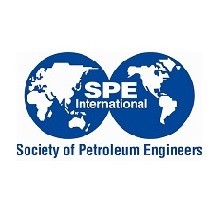
مدل سازی جابجایی ویسکوز در منابع ذخیره تخلخل دو گانه شکسته شده
چکیده
بازیابی نفت بهبود یافته با سورفکتانت (EOR) در ذخایر با شکست طبیعی کنترل شده (NFR) و ذخایر با نفوذ پذیری بسیار کم نوع باکن، کمتر شناخته شده اند. بنابراین، برای پیش بینی عملکرد آن، بهبود ابزار شبیه سازی منبع ذخیره، در نظر گرفتن مکانیسم جریان در حد امکان ضروریست. ما در این مقاله یک مدل شبیه سازی عددی دو تخلخلی(DP) و الگوریتم عملکرد انتقال جریان شکست شبکه، توسط تحریک یک مکانیسم جابه جایی ویسکوز مناسب تقویت شد. این مکانیسم به مکانیسم های انبساط سیال موجود، زهکشی گرانشی و فشار مویینگی افزوده شد. به منظور اعتبار سنجی دقت و بازده مدل بهبود یافته، نتایج با نتایج یک مدل تخلخل- نفوذپذیری متغیر، تکی- پیوسته و توری-ریز، مقایسه شد.
نتایج شبیه سازی مدل بهبود یافته با نتایج مدل شبکه-ریز مانند مورد مرجع، مطابقت داشت. در مدل عددی یک بعدی، تولید نفت جمع شده با جریان شدید آب، در مقیسه با مدل DP معمولی حدود 5% افزایش یافته است. همچنین، تولید نفت نهایی برای غلظت های سورفکتانت 1 تا 2% وزنی، بالای 5% افزایش داشته است. نتایج مشابهی در مدل های عددی چند بعدی به دست آمده است. در یک مدل شبکه نماینده، نرخ تولید نفت سیلاب در مدل بهبود یافته از 0.25 bbl/dayدر مقایسه با مدل DP معمولی 0.053 bbl/day شروع می شود. این نرخ در مقایسه با 0.03 bbl/day در آغاز تزریق شیمیایی، 0.124 bbl/day بوده است و مدل بهبود یافته از لحاظ محاسباتی بسیاز کارامد و سریع تر از مدل شبکه-ریز است.
برای کاربرد عملی، برای طراحی و ارزیابی زیست پذیری یک پایلوت آزمایشی EOR با استفاده از یک پروتکل تکاملی چندگانه در یک منبع کربنات شکسته شده، مدل بهبود یافته استفاده شد. این منبع نفوذ پذیری شبکه ای 10 md و تخلخل شبکه 0.05 و انتشار شکست 10000md دارد. نتایج مشابهی با استفاده از مدل های بهبود یافته و شبکه-ریز به دست آمد. همچنین آنالیز حساسیت روی فضای شکست 5 تا 20 ft انجام شد. متوجه شدیم که بلوک های شبکه کوچک تر بیشتر با جابه جایی ویسکوز تحت تاثیر قرار می گیرند.
Abstract
Surfactant-enhanced oil recovery (EOR) in fracture-dominated naturally fractured reservoirs and very low-permeability Bakken type reservoirs are less known. Therefore, to predict their performance, improvement of the reservoir simulation tools is necessary to account for the fluid flow mechanisms as much as possible. We present a dual-porosity numerical simulation model and algorithm (improved model) in which matrix-fracture fluid transfer function was improved by implementing a proper viscous displacement mechanism. This mechanism was added to the existed fluid expansion, gravity drainage, and capillary pressure mechanisms. Current dual-porosity reservoir simulators generally do not account for the viscous displacement mechanism. To validate both the accuracy and efficacy of the improved model, results were compared with the results from a variable permeability-porosity, single-continuum, fine-grid model (fine-grid model). Simulation results of improved model were in agreement with the results of the fine-grid model as the reference case. In a one-dimensional numerical model, water flood cumulative oil production increased about 5% compared to the conventional dual-porosity model. Also, incremental oil production increased over 5% for 1 wt% surfactant concentration. In water flood stage the matrix grid oil production rate started at 0.25 bbl/day in improved model compared to 0.053 bbl/day in conventional dual-porosity model. This amount was 0.124 bbl/day against the 0.03 bbl/day at the start of chemical injection. Similar results were obtained in a 2-D numerical model. Improved model was computationally very efficient and it was much faster than the computation time of fine-grid model. For a practical application, the improved model was used to design and assess the viability of an EOR pilot-test using a single-well, multiple-completion protocol in a fractured carbonate reservoir. This reservoir has a matrix permeability of 10 md and matrix porosity of 0.05, and fracture permeability of 10000 md. Similar result was obtained using improved and fine-grid models. Also sensitivity on various fracture spacing of 5 to 20 ft was performed. As a result, the smaller the fracture spacing is the higher the effect of viscous displacement.
چکیده
مقدمه
مدل دو تخلخلی بدون جابجایی ویسکوز درون شبکه
فاز آبی
فاز نفت
تعادل مواد سورفکتانت شکست
تعادل مواد سورفکتانت ماتریس
مدل تخلخل دوگانه با جابجایی در ماتریس
تنظیم درون شکست
مثال های مفهومی
نتایج شبیه سازی
بحث
نتایج
- ترجمه فارسی مقاله با فرمت ورد (word) با قابلیت ویرایش، بدون آرم سایت ای ترجمه
- ترجمه فارسی مقاله با فرمت pdf، بدون آرم سایت ای ترجمه
